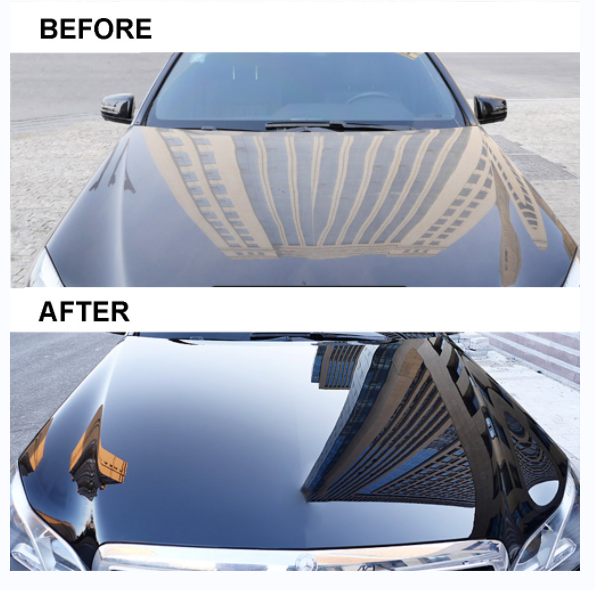Choose premium paint protection film for a ultra-clear layer of protection.
Choose premium paint protection film for a ultra-clear layer of protection.
Blog Article
A Comprehensive Guide to the Kinds Of Ceramic Finishing on the marketplace
Ceramic coatings have actually arised as a pivotal option throughout numerous sectors due to their unique properties and applications. As we explore the unique features and applications of these coatings, the ramifications for performance and durability become progressively evident, raising questions concerning which type could finest fit your needs.
Understanding Ceramic Coatings
Ceramic finishings are sophisticated protective remedies that have gained popularity in various sectors, particularly in automotive and aerospace applications. These finishings contain a liquid polymer that, when cured, develops a long lasting, hydrophobic layer externally of the substratum. This layer offers enhanced resistance to environmental contaminants, UV radiation, and chemical direct exposure, thereby expanding the life and aesthetic charm of the underlying product.
The essential element of ceramic coverings is silica, which contributes to their firmness and resilience. The application process usually involves surface area prep work, application of the coating, and curing, which can be accomplished via heat or UV light. When treated, ceramic finishings display phenomenal bonding residential or commercial properties, enabling them to adhere strongly to a range of surfaces, consisting of metals, plastics, and glass.
In addition to their protective features, ceramic coatings likewise provide ease of upkeep. Their hydrophobic nature minimizes the adherence of dirt and grime, making cleaning simpler and less regular. Overall, the adoption of ceramic finishes represents a considerable innovation in surface protection technology, offering both practical and aesthetic benefits across multiple sectors.
Types of Ceramic Coatings
Various kinds of ceramic layers are available, each designed to meet particular performance requirements and applications - Auto Detailing. One of the most common types consist of:
Silica-based Coatings: These finishings largely are composed of silicon dioxide and are known for their durability and chemical resistance. They are extensively made use of in vehicle and commercial applications.
Titanium Dioxide Coatings: Distinguished for their photocatalytic homes, titanium dioxide finishes are usually applied in environments where self-cleaning and antifungal properties are preferable, such as in structure products and auto finishes.
Zirconia Coatings: Characterized by their high-temperature stability and thermal resistance, zirconia finishes are used in applications such as generator engines and high-performance auto components.
Alumina Coatings: Displaying exceptional hardness and thermal stability, alumina coatings are often made use of in wear-resistant applications, including cutting devices and commercial machinery. - Auto Detailing
Hybrid Coatings: Incorporating the homes explanation of various products, crossbreed finishes supply enhanced efficiency characteristics, making them ideal for one-of-a-kind and requiring applications.
Each sort of ceramic finishing offers unique objectives, enabling customers to select one of the most ideal service based on details ecological conditions and performance demands.
Advantages of Ceramic Coatings
Coatings play a vital role in improving the performance and durability of surface areas throughout various industries. Ceramic coatings, particularly, offer countless benefits that make them progressively popular amongst suppliers and consumers alike. One of the main benefits is their exceptional longevity. These finishings are immune to scratches, chemicals, and UV rays, ensuring that the underlying surface continues to be secured over time.
Along with sturdiness, ceramic finishings give exceptional hydrophobic ceramic coating sarasota buildings, enabling simple cleaning and maintenance. This water-repellent nature reduces the adherence of dirt, gunk, and other pollutants, which can extend the visual allure and functionality of the surface. Ceramic coatings can significantly enhance thermal resistance, making them perfect for applications that endure high temperatures.

Application Process
When applying ceramic finishings, a careful technique is necessary to attain ideal outcomes. The application process commonly begins with complete surface prep work. This includes cleaning, decontaminating, and polishing the surface to eliminate all contaminations, consisting of dust, grease, and prior waxes or sealants. A tidy surface guarantees correct bond of the covering.
As soon as the surface is prepped, the next step is to use the ceramic covering. The coating must be used in thin layers, as thicker applications can lead to unequal coatings.
After application, the covering requires a certain healing time, usually varying from a couple of hours to a full day, depending on the item. Adhering to these steps vigilantly will optimize the effectiveness and longevity of the ceramic covering, providing a sturdy safety layer for the surface area.
Maintenance and Long Life
To guarantee the long life and effectiveness of a ceramic finish, normal maintenance is essential. Ceramic finishes, understood for their resilience and safety high qualities, call for specific treatment regimens to optimize their lifespan and performance.
Along with routine cleaning, routine inspections are crucial. Search for indicators of wear or damage, such as hydrophobic properties decreasing or surface blemishes. If essential, a light polish may be applied to revitalize the coating without stripping it away.
Furthermore, the application of a booster spray can boost the layer's hydrophobic effects and restore its gloss. This is specifically advantageous for coatings that have remained in usage for an extensive duration. Ultimately, by adhering to these upkeep techniques, one can considerably prolong the life of a ceramic layer, ensuring that it remains to supply ideal security against ecological factors and maintain the visual appeal of the vehicle.
Final thought

Report this page